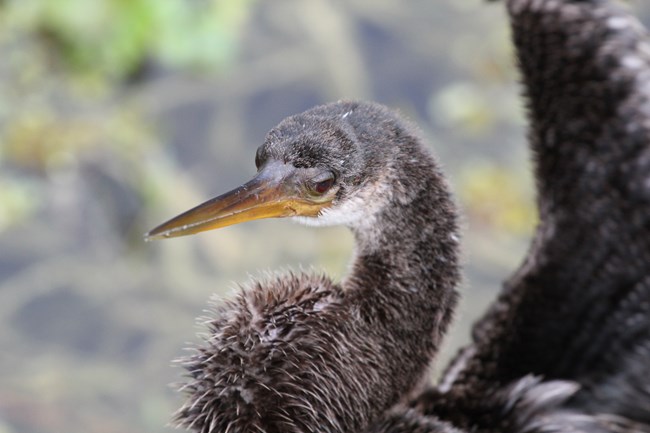
With the multitude of wading birds, song birds, hawks and eagles Big Cypress National Preserve is a bird watchers paradise. A bird enthusiast can easily see 50 species of bird in one visit. One of the many birds found here at the Preserve is the anhinga. What do they look like? Anhingas are often confused with cormorants, a closely related species of bird found in Big Cypress. The two birds are easily distinguishable by their tail and beaks. Anhingas have a sharp straight beak, while cormorants have a hooked beak. Likewise, anhingas have a longer tail than that of the cormorant. 
Why do they do that? After hunting, anhinga sit in shrubs and trees with their back to the sun and stretch out their wings. This posture helps to dry the bird's water logged wings and warm its body after exposure to the cold water. In Big Cypress National Preserve, anhingas are often spotted sitting in the mangroves along Turner River Road safely out of reach of predators. Did you know? |
Last updated: February 12, 2025

